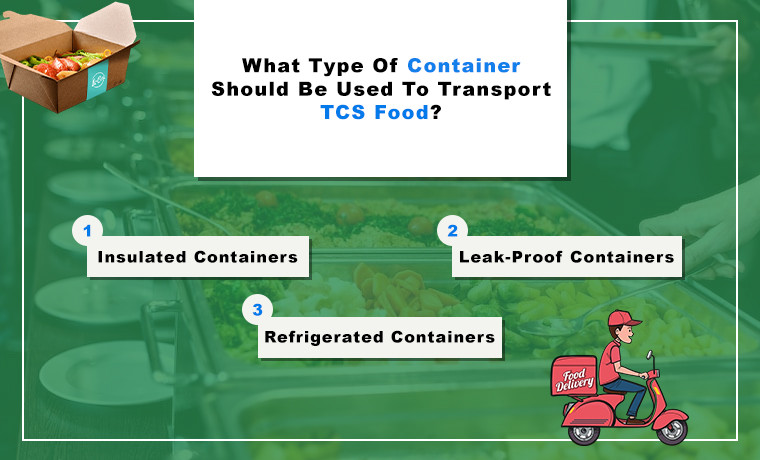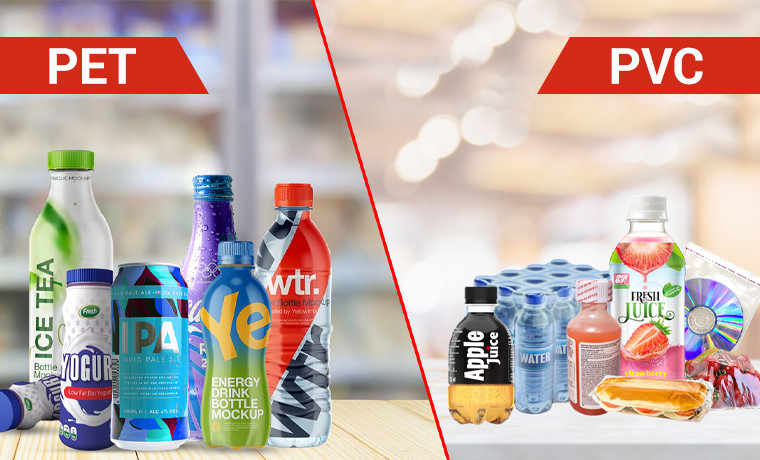The Best Containers for Safe Food Delivery & Enhanced Freshness (2025)
October 08, 2025

Transporting food in containers from one place to another while maintaining its freshness and safety can be challenging. With a wide range of container types, including glass jars, silicone, plastic, and stainless steel, selecting the right one can play a crucial role in preserving food quality during transit.
Some food containers are lightweight and easy to carry, while others provide superior insulation. Unsure which food container is best for keeping your meals safe and fresh during transport? This guide can help.
We will explore various types of containers used to transport food, designed to maintain food quality from the kitchen to reach the customer's hands.
What Exactly Are Food Containers?
Food containers are a type of food packaging designed to store and transport food items. They come in various sizes, shapes, and materials to:
- Preserving freshness
- Preventing contamination
- Maintaining proper temperature
- Organizing food for delivery or storage
You can store your dry food items, including rice, flour, and sugar, in sealed containers to keep them safe from moisture and pests. In addition to safety, these containers extend the shelf life of food.
How to Keep Food Safe During Transportation?

Here are essential tips on how to safely transport food items.
Choosing the Right Containers:
Choosing the appropriate container is essential for maintaining food freshness and safety during transport. Look for containers that are:
- Durable
- Easy to clean
- Made from food-safe materials
Airtight food storage containers can help prevent spills and preserve the quality of your food. You can choose BPA-free plastic containers to avoid potential health risks. Considering that reusable and recyclable packaging materials are ideal for minimizing environmental impact.
Pack Food Items Separately in a Single Use Container:
Instead of packing food items such as vegetables or fruits in a large container, it is better to pack them separately in a single container. For this, mylar bags are ideal for packing various food items, including candies and snacks.
Label Containers Clearly:
Use labels on the containers to identify:
- Content
- Ingredients
- Preparation dates
- Expiration dates
This improves food handling safety and helps end users make informed decisions.
What Type Of Containers Should Be Used To Transport Food Off-site?

In the realm of containers, there is a wide range of containers available that can help you transport your food safely. You can choose a container to store your food efficiently.
The popular types of containers for preserving and storing food are here.
Food-Grade Plastic Containers:
Plastic containers come in various sizes and styles. They are lightweight and easy to carry anywhere. The airtight and secure lid on these containers prevents food inside these containers from spilling.
Stainless Steel Containers:
Made from stainless steel, these containers are durable and smart food storage containers in the kitchen to maintain food freshness during storage and transportation. With tight closures, these containers are strong enough to keep food fresh for longer.
Note: Stainless steel containers reduce bacterial growth by 50% vs. plastic (Food Safety Journal).
Glass Jars:
These transparent containers made of glass are heavier than plastic containers but safer for different types of food, and an excellent choice for storing hot food items.
Disposable Food Containers:
The single-use containers are a popular choice as they are often used by restaurants in delivering food. These disposable containers are superlative for on-the-go eating.
Mason Containers or Canning Jars:
Having a unique design with a screw-on lid, mason jars are perfect for liquid foods like soups or shakes. They are ideal for safely transporting liquid food items from one place to another.
Silicone Containers:
These containers are foldable, convenient, and easy to carry. They collapse for easy, space-saving storage when not in use.
What Type Of Container Should Be Used To Transport TCS Food?

Here are the types of containers to transport TCS (Time/Temperature Control for Safety) food efficiently.
1. Insulated Containers
Ideal for maintaining the temperature of hot and cold food during transportation. They keep hot food hot and cold food cold.
2. Leak-Proof Containers
To prevent contamination and spills, these food containers with tight seals are ideal to avoid food leakage.
3. Refrigerated Containers
These containers are highly effective in keeping perishable items safe and fresh for longer at controlled temperatures and enhance their shelf life during transportation.
Read More: How To Seal Mylar Bags For Food Storage in an Efficient Way
What Does It Mean For Food Containers To Be Labeled as ServSafe?

You may have heard of ServSafe, but you might not recognize its significance when you see it on a ServSafe-labeled food container.
ServSafe is a comprehensive food safety program that ensures containers meet high standards for safe food handling. Restaurants, catering services, and food delivery businesses must transport their food in containers safely, meeting ServSafe guidelines. The containers used to transport food should be ServSafe labeled.
Safety Standard Of ServSafe:
It is a food and beverage safety training and certification program administered by the NRA (National Restaurant Association) that sets the handling and storage standards to preserve their quality and freshness.
Made Up Of Safe Material:
The ServSafe label on the container gives you peace of mind that the food packaged inside the container is completely safe, as it is made from food-safe materials and is not harmful to your health.
Tight and Secure Sealing:
A close-fitting, tight, and firmly secure sealing feature of a container keeps food safe from various elements. Plus, the label on the container describing the food name, ingredients, preparation, and expiry date information wins the customer’s trust to make an informed buying decision.
Crystal Clear Clamshell Packaging that Speaks Freshness and Volumes
Transparent clamshell packaging in this modern age is an excellent choice when you think about which container protects and advertises the food for sale and storage.
This food box consists of two hinged halves that snap together to form a secure enclosure. It offers convenience, protection, and visibility for food, making it a great pick for display and transport.
The transparent feature of this packaging allows customers to view the food inside. It helps customers to learn if the food is fresh and safe. You can easily label it with essential information.
What Are The Requirements For Containers Used To Transport Food?

Before transporting your food, be sure that the containers meet the requirements to preserve its freshness and quality.
1. Insulation
The containers should be able to maintain proper temperatures to keep food safe during transit.
2. Durability
Make sure the food container you choose can withstand breaking or leaking.
3. Sealed Tight and Leak-Resistant
The jar or container is designed to prevent contamination and spills, ensuring your food stays secure.
4. Food-Grade Material
Choose a food-grade material for food containers to ensure the complete safety of food from direct sunlight and contact with food.
5. Easy to Clean
Ensure the container is easy to clean and prevents bacterial growth.
6. Proper Labeling
The container labeled properly helps customers to identify the content inside and educate them about products with essential information, including the expiry date.
Wrap-up
To answer the “best containers used to transport food”, it is essential to explore their types. The right food container isn’t just about convenience—it’s about sealing safety and freshness wherever they travel. Whether you choose stainless steel for durability, silicone for flexibility, or disposable options for convenience, each has its place in the modern food supply chain.
The functionality and design of food containers can help keep the integrity of food and satisfy consumers' health concerns. If you're ready to find the best containers for your food business, get in touch with us for personalized packaging solutions. Contact Custom Product Packaging via email at orders@customproductpackaging.com for customized solutions.





